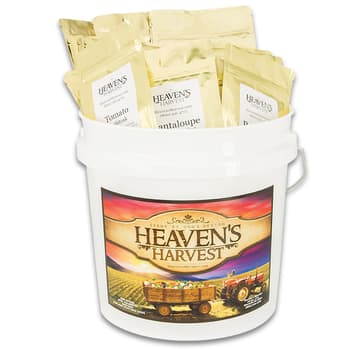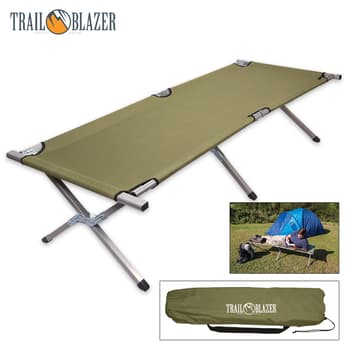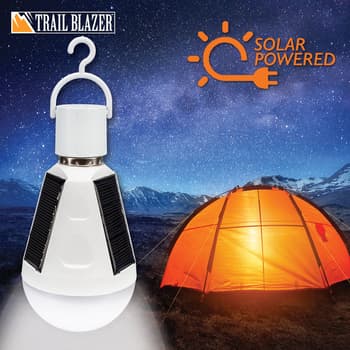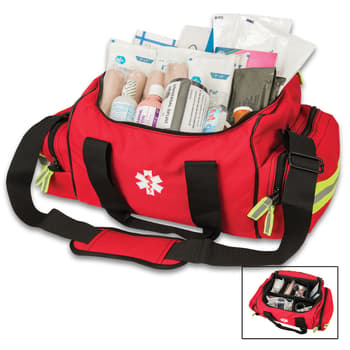How To Survive For $1,400
By Adelia Ladson
So you got your stimulus check, and you don’t feel like going back to work. You feel like taking a year off and kicking back. But how are you gonna live? Don’t worry! We got you covered. Here’s how you can take that $1,400 and stretch it enough to live on for a year.
First, you need to look at your year’s sabbatical like a survivor situation (without the disaster scenario) and plan with that in mind to ensure that you have everything you need to live. Also, look at it like an extended camping trip because your biggest expense that you’re going to have to cut is your rent. I’m assuming that you’re renting because if you’re paying a mortgage, you have too much invested to take a year off. So, living rent-free for a year is basically either pitching a tent or living in your vehicle. I’m gonna go with camping because that sounds like a better option then finding a place to park your vehicle every night. You can camp for free in National Forests and on land overseen by the Bureau of Land Management. There are no amenities whatsoever but with the right gear, you can make it happen.
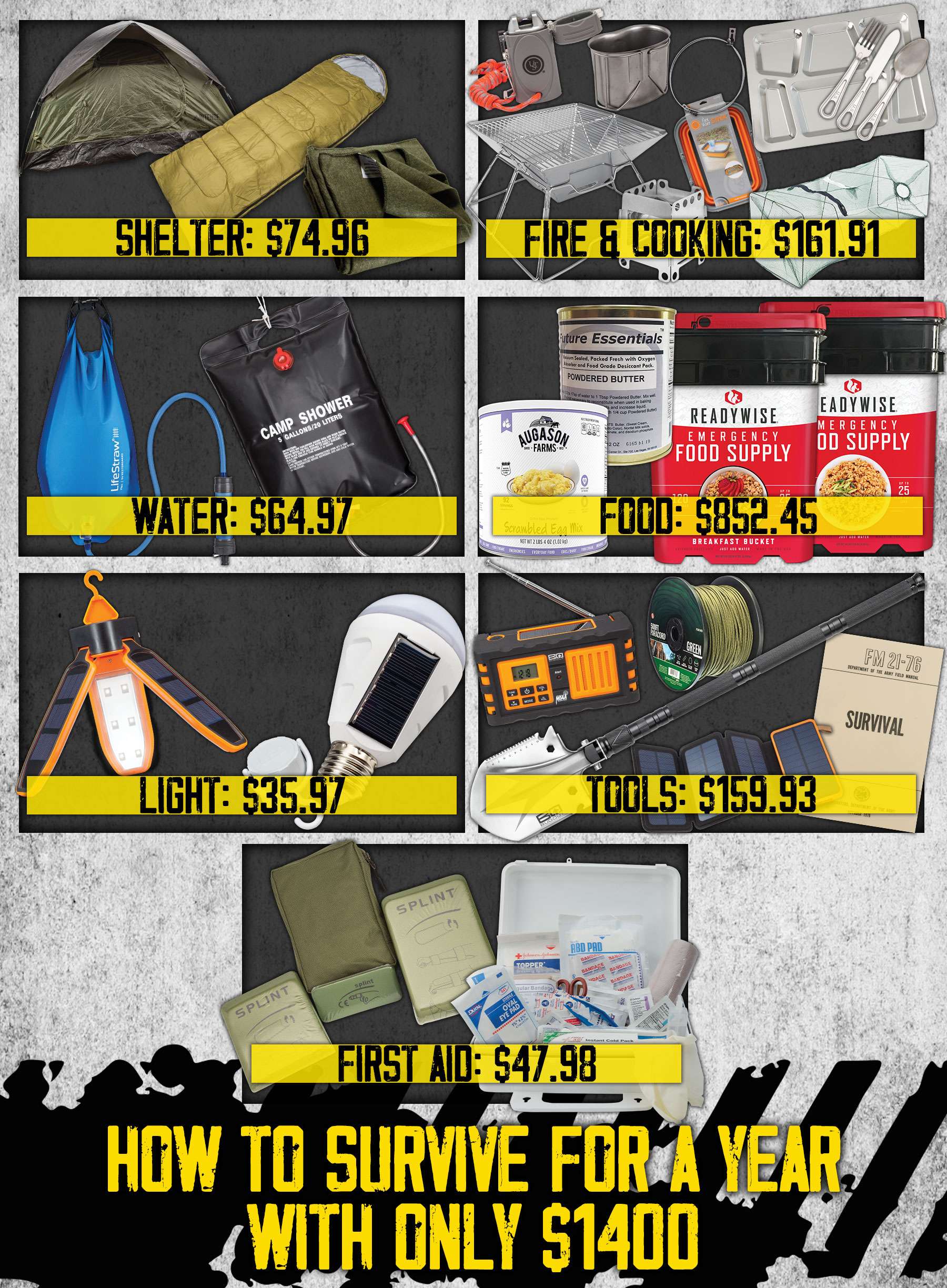

Shelter
Of course, the first thing that you need is a good tent to call "home". It needs to have plenty of living space inside since you’re going to be spending a lot of time in it. It also needs plenty of ventilation, an integrated ground cover, high-quality weather-resistant construction and a rainfly. For your bed, choose a mummy sleeping bag that’s rated for all seasons and then, for extra warmth, when needed, add a wool blanket. FYI, wool will retain its warmth even if it gets damp. These are just the basic necessities. Add whatever else you already have that will make it homey. Afterall, this is where you’ll be kicking back for a year, so you want it comfy and cozy.Water
When choosing the location for your new "home", it needs to be close to a source of water. I don’t need to go into the importance of having water. We all know it’s a necessity for sustaining life. However, it is of the utmost necessity that I point out that you have a good, quality water filtration and purification system to assure that the water is safe for consumption. A trip to the hospital, courtesy of some waterborne bacteria, will definitely blow your $1,400 budget. Now, unless you want to do the whole washcloth bath thing or venture into the depths of your water source, I suggest that you invest in a solar shower. Then, you can at least have a relaxing hot shower instead of a cold dunk. I mean, this is kind of supposed to be a vacation, right?Fire
The next essential is a reliable source of fire or spark to ignite your camp fire. To me, the one you can count on to work every time is a flint rod and striker but you should really consider the TekFire LED Fuel-Free Lighter, which can be charged with the solar powered charger and power bank that you will definitely make sure that you have with you. (More on that, later.) When setting up your kitchen, a simple grill and a camping stove, that uses natural materials for fuel like leaves and sticks, is the way to go. Then, really all you need are stainless steel utensils, a dining tray and a canteen cup with a lid, all taken from military surplus. Add to that the UST FlexWare Sink to wash your dishes in and whatever else you already have to make your outdoor kitchen workable. Obviously, don’t forget a good knife and a can opener.Food
Since you won’t be ordering take-out every day, let’s talk about food. So, with no refrigeration, everything needs to be non-perishable, which means canned and freeze-dried rations. MREs (meals-ready-to-eat) have come a long, long way over the years so I really suggest stocking up on them. You can get 120-serving, ReadyWise Grab and Go Buckets that contain only entrées and only breakfasts. These individual meals just require hot water to prepare and are literally ready in minutes. Plus, they are actually delicious, and they are nutritious, giving you the daily calories that you need. You can make the meals stretch pretty far but supplement them with some canned goods like powdered eggs (A great protein source.) and powdered butter, to mix in them, for an additional breakfast option. Don’t forget to bring some salt and pepper, too. Now, just in case you can't stretch your rations all the way, you need to add a small animal snare kit and some fishing gear. You can always make a meal out of fish and, in a pinch, you can trap rabbits or squirrels. Nothing like free food, right?Light
Having a bright light source for those night-time hours are essential unless you plan on going to bed every day when the sun goes down. There are a couple of really great options that I recommend because they’ll charge all day via solar panels and the LED lights put out a lot of light. Both the Trailblazer Tri-Folding Light and the Hanging Light Bulb have hooks so that you can hang them in your tent. The tri-fold light can also be set up on any flat, surface like a folding table or stump.Tools
Now, there are some tools that you’ll need to add to your camp home to help you get along throughout the year. First and foremost, as I touched on before, you have to have a solar charger and power bank to keep any electronics you bring with you, especially, your cell phone, powered up. Personally, I’m not living out in a National Forest without my cell phone as a life-line in case something happened. Also, make sure you have a solar powered radio that receives the NOAA weather channel so you can keep up with the weather in your area. Other essential tools to take with you are the BugOut Folding Entrenchment Tool, which is basically a camping tool box in a compact form, and paracord. I suggest getting a 500’ spool of paracord because it’s dead useful and completely versatile. Then, seriously, you need to throw in the Army Survival Manual, which is the Bible when it comes to wilderness survival.First Aid
To round out your $1,400s worth of supplies for your year of kicking back in nature, you absolutely need to have a really good first aid kit. I recommend the Elite First Aid Kit. It has everything you need for non-life-threatening medical situations. I also recommend that you get a splint set for more serious medical emergencies. Always good to be prepared for the worst.
Once again, whatever you deem as a necessity (That you already have and don’t have to buy.) to make your tent home comfortable to kick back in for a year, go ahead and add it to your gear. Just remember, though, you’re the one who has to tote it all out to your campsite.
